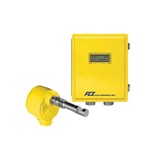IBISWorld's business information analysts have identified the top industries in which Australian small and medium-sized enterprises (SMEs) thrive. IBISWorld defines SMEs as companies that generate annual revenue of between $750,000 and $25.0 million, and employ fewer than 50 staff.
"Dental services, wine production, road freight transport, specialist medical services and restaurants are some of the industries where consolidation and traditional bolt-on acquisitions do not necessarily improve profit margins," said Andrei Ivanov, IBISWorld senior industry analyst.
Despite the maturity of most of these industries, they are generally characterised by low market share concentration and low to medium barriers to entry. SMEs typically thrive in industries that have low market share concentrations, as this means there are few major players occupying the industry.
High variable costs
For service-based industries, where wages are the dominant expense and tend to be higher than other industries, the cost of additional employees (in terms of profit margins) does not decline with a greater headcount. This trend contrasts with non-service industries, where automated production processes can reduce the costs of additional employees and allow companies to benefit from economies of scale.
"For service-based businesses to increase the size of their operations, they need to hire proportionally more staff to provide the necessary service," said Ivanov.
"Therefore, there is limited scope for operators in the dental services and specialist medical services industries, for example, to benefit from scale."
This contributes to low market share concentration, a lack of major players and greater prevalence of SMEs in these industries.
Ownership structure
Unlike the service industries, the wine production industry produces bulk goods and, unlike other similar producers, it remains largely fragmented and SMEs dominate – and with anticipated growth spurred by increasing premiumisation and a resurgent taste for Australian wine, SMEs in the wine production industry are tipped to be the main beneficiaries. The core reason for the number of SMEs operating in this industry relates to the ownership structure of wineries.
"Smaller scale wineries are often family owned and operated, with many families unwilling to sell their businesses to larger companies that may be seeking to consolidate operations," said Ivanov. This trend is common across a number of agricultural industries with a large degree of family ownership.
"In addition, the reputation of local wine brands and varieties is crucial for producers, which further limits the scope for larger firms to consolidate and expand volumes," added Ivanov.
Low barriers and high competition
The road freight transport and restaurants industries are also characterised by a large number of SMEs. This is largely due to the low barriers to entry. A truck licence and a leased truck is all that is required to operate in the road freight transport industry. After that, business can be gained via subcontracting for the handful of larger companies in the industry, which together account for no more than 15 per cent of total revenue.
Similarly, establishing a restaurant is cheap compared with establishing large factories. The restaurants industry is also highly competitive, with a multitude of diverse and geographically dispersed operators, which means there is only a limited scope for large restaurant chains to attain market share. Over the past five years, Australian consumers have demonstrated a willingness to try new establishments and have shunned larger chain operators, with celebrity cooking programs contributing to this trend.
"Similar trends are evident in the cafes and coffee shops industry, where smaller operators have dramatically outperformed the larger chains," said Ivanov.
Outsourcing non-core functions
With limited scale, SMEs often rely on outside support for back-end operations. Since there is little opportunity to spread overhead costs across a range of products, these industries tend to cut these costs by outsourcing non-core business processes.
"Provided this does not undermine the quality of the product or service, outsourcing makes economic sense and reduces the risks of fixed costs blowing out, whereas blue chip companies often have the size and scope to complete these processes in-house," said Ivanov. "By spending less time on non-core operations, managers can focus more on strategy and growth."
Services such as accounting, human resources, recruitment and payroll administration are among the most common functions outsourced by SMEs. For example, wine producers may outsource distribution, minimising the need for costly vehicles and transport operators, while some restaurants may outsource areas of food production, purchasing ready-made items.




-160x160-state_article-rel-cat.png)
